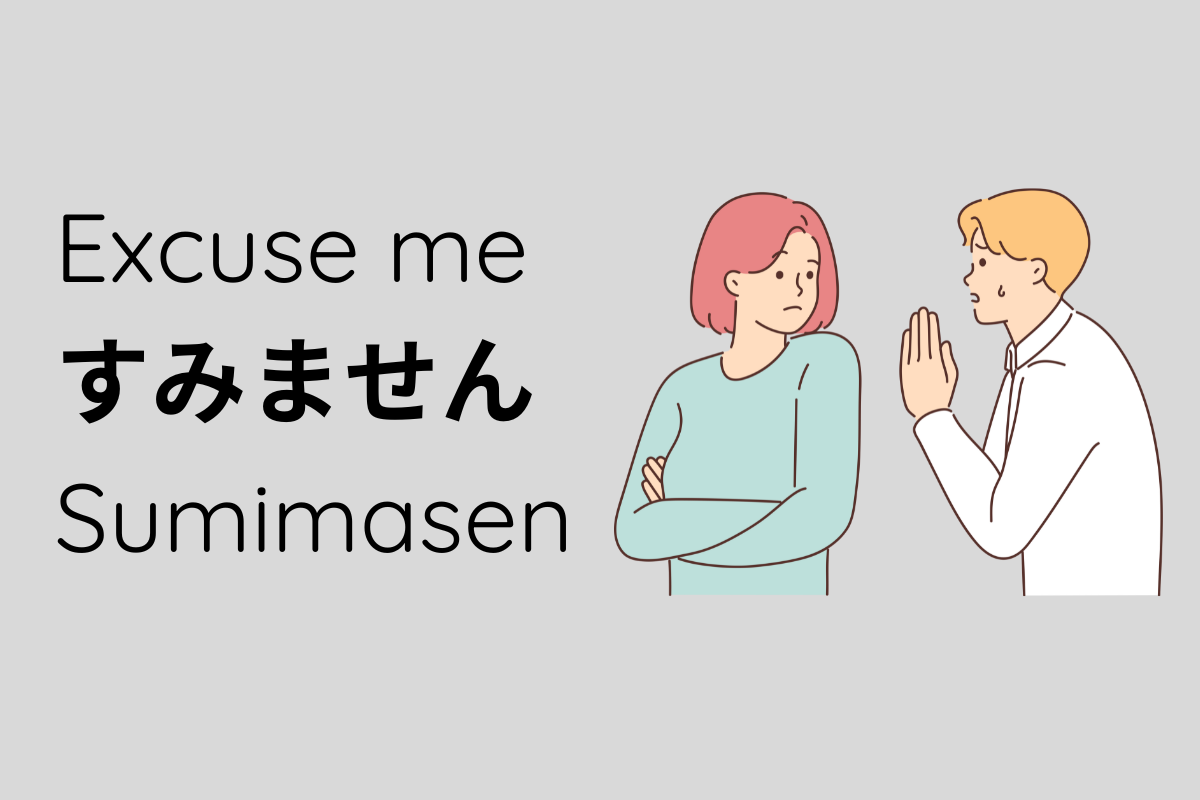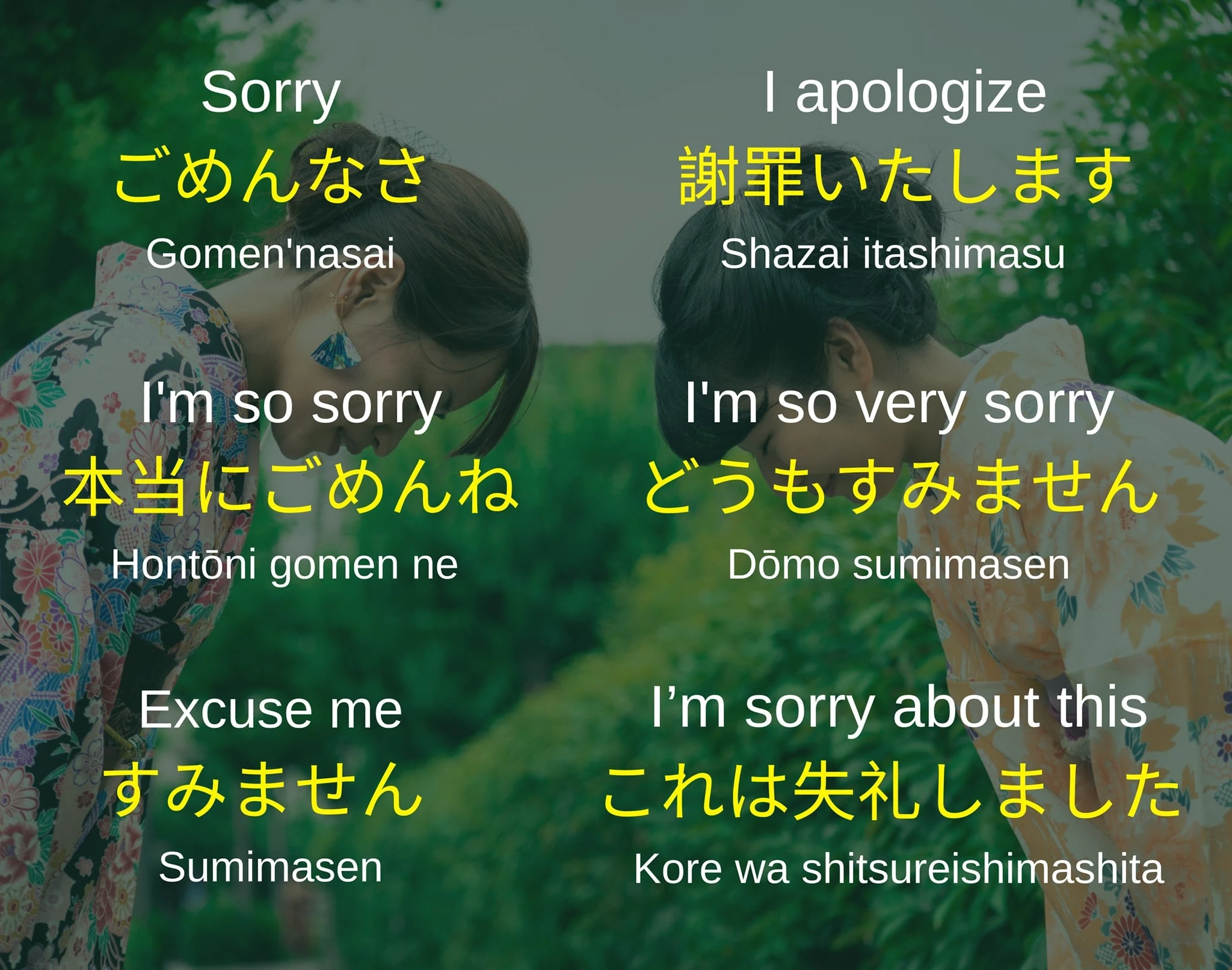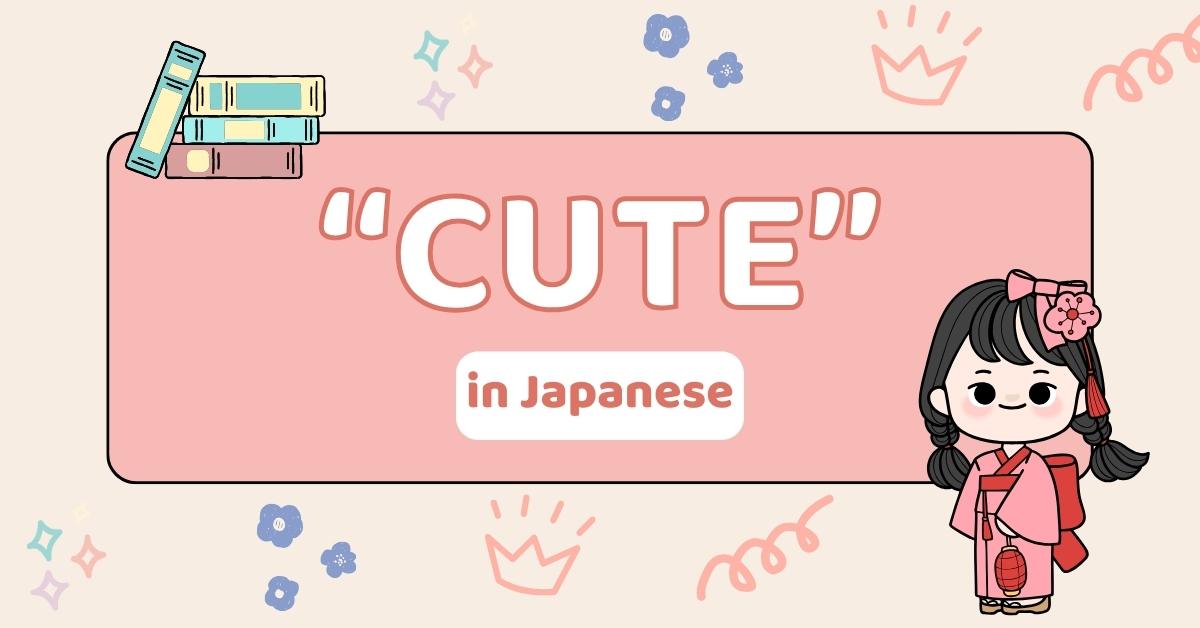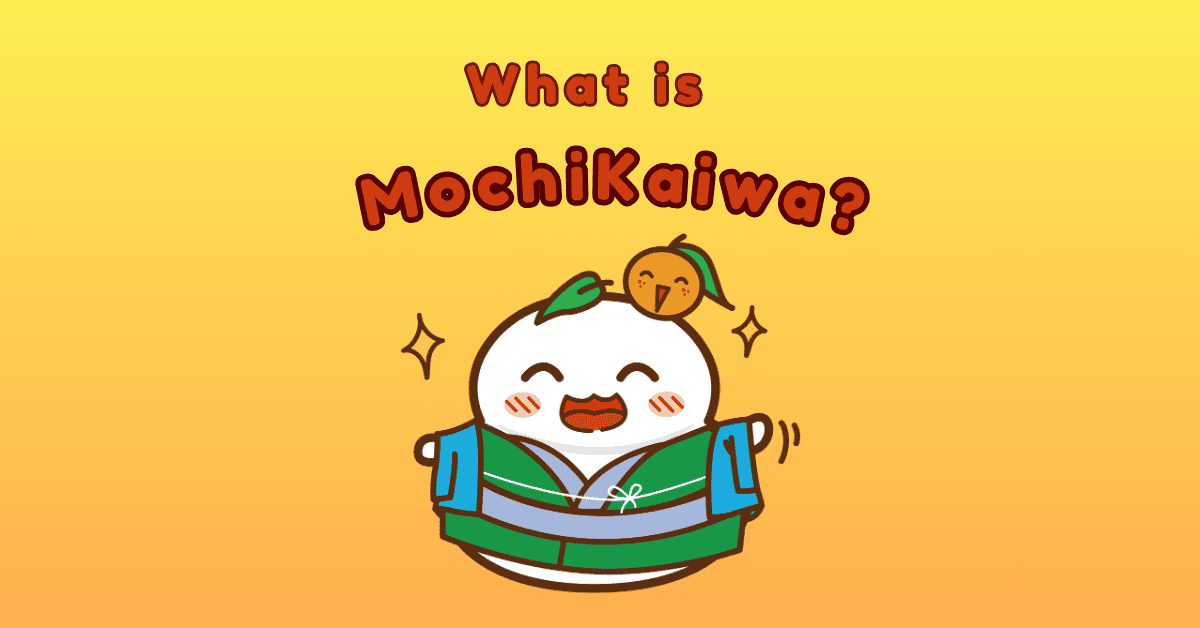Navigating social interactions in Japan is an exercise in cultural understanding, especially when it comes to expressing politeness. One of the key phrases in Japanese etiquette is “Excuse me” – すみません (suminasen) which is used in a variety of contexts from seeking attention to expressing regret or gratitude. This detailed guide explores the different ways to say “excuse me” in Japanese, offering a deeper understanding of when and how to use these expressions appropriately.
- How to say “Excuse me” in Japanese
- All about すみません (Sumimasen)
- When and where to use “Sumimasen”
- Other ways to say “Excuse me” in Japanese
- Useful phrases for saying ‘excuse me’ in Japanese
- Understanding cultural context
- Tips for learning Japanese conversation effectively
- FAQs

How to say “Excuse me” in Japanese
Understanding the level of formality required in different situations is crucial in Japanese, as it reflects respect and social awareness.
Polite form
すみません (Sumimasen) is the go-to phrase for saying “excuse me” in a polite and universally acceptable manner. It is versatile enough to be used in almost any situation where politeness is required. Whether you are trying to get a waiter’s attention at a restaurant, apologizing for a small mistake, or navigating through a crowded train, “sumimasen” communicates respect and acknowledgment of any minor inconvenience you might be causing.
Casual form
In less formal settings, such as among friends or within younger crowds, you might hear すまん (Suman) or ごめん (Gomen). These expressions are more relaxed and should be used only in appropriate social settings where the atmosphere is informal. “Gomen” is softer and akin to saying “sorry” in English, while “Suman,” which carries a more masculine undertone, is less common and somewhat abrupt.
To enhance your understanding and retention of common phrases like “sumimasen” and “gomen,” try using MochiKanji to practice and master these expressions with ease!
Start your free trial now!
All about すみません (Sumimasen)
“すみません” is one of the cornerstones of polite Japanese phrases and is crucial for anyone looking to build good social relationships in Japan.
Written in Hiragana
Sumimasen is written as すみません in Hiragana. Learning to write it correctly is essential, as it is frequently used in written notes, messages, and signs.

Common writing mistakes
The most common mistake learners make with “sumimasen” is confusing the characters or mispronouncing them. For example, writing すいません (suimasen) instead of すみません (sumimasen) changes the pronunciation and can potentially confuse or mislead the listener. Correct spelling is crucial for clear communication.
Word structure
The Japanese phrase for “excuse me” traditionally consisted of a verb paired with an auxiliary verb indicating denial or negation.
Original words
- 済む (sumu) – This verb originally meant “to be completed,” “to be satisfied,” or “to settle.” It functioned as the main verb in the phrase.
- 動詞 (doushi) – In grammatical terms, this is classified as a verb.
- ない (nai) – This is an auxiliary verb that means “no,” “not,” or “never,” used to negate or express the absence of something.
- 助動詞 (jodoushi) – This term categorizes it as an auxiliary verb.
Transformation from present to past tense
The phrases evolved from their base forms to express politeness and past actions, reflecting politeness and sometimes regret in hindsight.
- すみません (sumimasen) – The polite present tense form, commonly used in daily interactions to mean “Excuse me” or “I’m sorry.”
- Past Tense: すみませんでした (sumimasen deshita) – This version is used to express apologies for something that occurred in the past, effectively saying “I was sorry,” or “I have been sorry.”
This historical perspective highlights how Japanese incorporates respect and subtlety directly into its linguistic structure, allowing speakers to convey not only the action but also the temporal context and the depth of their politeness or regret.
When and where to use “Sumimasen”
“Sumimasen” is an all-rounder in verbal etiquette in Japan, used in various contexts to convey different respectful sentiments.
- To Get Attention: It is common to say “sumimasen” when calling for service in a restaurant or shop.

- Apologizing: For minor inconveniences or mistakes, “sumimasen” effectively expresses a polite apology.
- Passing Through: In crowded places, saying “sumimasen” as you move past people is considered polite and necessary.
- Expressing Gratitude: While less common, “sumimasen” can also express gratitude, akin to thanking someone for going out of their way to help you.
Other ways to say “Excuse me” in Japanese
While “sumimasen” is undoubtedly the most versatile, there are other phrases used to convey similar meanings in specific contexts:
- 失礼します (Shitsurei shimasu): This formal phrase means “I commit a rudeness” and is used when entering or exiting a room, or when performing an action that might disturb others. It shows a high level of respect and awareness of one’s actions.
- お邪魔します (Ojamashimasu): Translating directly to “I’m going to be in the way,” this phrase is used when entering someone’s home or workspace, acknowledging that you are intruding into their space.
- ちょっと (Chotto): A softer and indirect way of getting someone’s attention or prefacing a request, “chotto” can imply a need to pass by or a prelude to a polite request.
In Japanese, the way you say “excuse me” can vary greatly depending on the context, your relationship with the person you’re speaking to, and the social setting. From the versatile “sumimasen” to more specific phrases like “shitsurei shimasu,” understanding these nuances
Continue generating is key to navigating Japanese social interactions successfully. Mastery of these phrases not only helps you avoid faux pas but also enriches your communication, making your interactions smoother and more respectful.
- 気をつけて (Ki wo tsukete): This phrase, meaning “be careful,” can sometimes function as a way to excuse oneself, especially if someone is doing something that could be potentially disruptive or dangerous.
Useful phrases for saying ‘excuse me’ in Japanese
To use “excuse me” in specific situations, you can refer to the following phrases:
- すみません、ちょっとお伺いしてもいいですか? (Sumimasen, chotto ukagai shitemo ii desu ka?)
Excuse me, may I ask you something? - 失礼します、こちらに入ってもよろしいですか? (Shitsurei shimasu, kochira ni haitte mo yoroshii desu ka?)
Excuse me, may I come in here? - お邪魔します、失礼いたします。 (Ojamashimasu, shitsurei itashimasu.)
Excuse me, I will intrude for a moment. - すみませんが、道を通らせていただけますか? (Sumimasen ga, michi o toorase te itadakemasu ka?)
Excuse me, may I pass through?
If you’re looking to improve your vocabulary and memorize these expressions effectively, apps like MochiKanji can be a great resource. With its Spaced Repetition System (SRS), MochiKanji helps you review and retain essential phrases just before you forget them, making learning more efficient.
Try it for free now!
Understanding cultural context
In Japan, the indirectness of language reflects the culture’s value on harmony and non-confrontation. When you use phrases like “sumimasen” or “shitsurei shimasu,” you’re not just saying “excuse me”; you’re also indicating your awareness of others’ comfort and your intent to maintain harmony. This level of politeness is deeply ingrained in Japanese communication and is appreciated in both professional and personal settings.
Practical tips for using Japanese excuse phrases
- Read the room: Understanding the level of formality required in any given situation can help you choose the right phrase. Use “sumimasen” in most situations, but consider “shitsurei shimasu” in very formal settings.
- Listen and learn: Pay attention to how native speakers use these phrases. Observing real-life examples can provide deeper insights into their appropriate usage.
- Practice: Regular practice with native speakers or through language learning platforms can help solidify your understanding and usage of these expressions. Try role-playing different scenarios where you might need to use “excuse me” in various ways.
- Stay humble: When in doubt, err on the side of being too polite. It’s usually better to be overly formal than too casual, especially in a new or unfamiliar social setting.
Expanding your vocabulary
As you become more comfortable with basic expressions for “excuse me,” begin to expand your vocabulary to include other polite phrases and terms. This will not only improve your proficiency in the language but also enhance your ability to express yourself more naturally and accurately.
For instance, learning to say “thank you” in various ways (ありがとう arigatou, ありがとうございます arigatou gozaimasu, 感謝します kansha shimasu) can complement your knowledge of excuse phrases, providing you with a more comprehensive toolkit for polite conversation.
Tips for learning Japanese conversation effectively
Want to learn how to speak and talk like a native speaker? Here are some effective tips, to enhance your Japanese conversational skills:
Practice regularly
Consistent practice is key. Engage in daily conversations, even if it’s just a few sentences.
Immerse yourself
Surround yourself with Japanese media such as movies, TV shows, and music. This helps in understanding context and improving listening skills.
Use language exchange partners
Find a language exchange partner to practice speaking and listening: Learn vocabulary with MochiKanji

Check out the MochiKanji app as a companion! This app uses an interesting technique called Spaced Repetition System (SRS) to help you memorize and retain vocabulary more effectively. Essentially, this technique ensures you review words right before you’re about to forget them, making it easier for you to remember them long-term. In addition, MochiKanji also offers a variety of conversation courses, suitable for many needs and levels.
Conclusion
Navigating politeness in Japanese through phrases like “excuse me” is an essential skill that requires understanding both the language and the cultural context. By mastering various ways to say “excuse me” and when to use them, you become better equipped to handle social interactions gracefully. This not only aids in daily communication but also deepens your cultural understanding, making your experience with the Japanese language more rewarding and respectful. Remember, in Japanese culture, how you say something is often as important as what you say.
FAQs
Saying excuse me in Japanese?
In Japanese, saying “excuse me” can vary depending on the context, and there are several expressions you can use:
- すみません (Sumimasen)
This is the most common and versatile phrase for “excuse me.” It can be used in several situations:- To politely get someone’s attention (e.g., in a restaurant or store).
- To apologize for a minor inconvenience or mistake.
- To say “thank you” in a humble way when someone does something for you.
- “Sumimasen, could I get the menu?” (すみません、メニューをお願いします。)
- 失礼します (Shitsurei shimasu)
This phrase is more formal and translates to “Excuse me” or “Pardon me” in situations where you’re interrupting someone or entering/leaving a room. It’s often used in business or formal settings.- When entering or leaving a meeting or office.
- As a polite way of interrupting someone when they’re busy.
- “Shitsurei shimasu, may I come in?” (失礼します、入ってもよろしいですか?)
- ごめんなさい (Gomen nasai)
While this phrase translates to “I’m sorry,” it can also be used as “excuse me” in more personal situations when you’ve made a mistake or inconvenienced someone. It is a stronger apology than “sumimasen.”Example:- “Gomen nasai for stepping on your foot!” (ごめんなさい、足を踏んでしまって!)
- ちょっとすみません (Chotto sumimasen)
This is a slightly more casual way of saying “excuse me,” often used when you need to interrupt someone briefly or pass by.Example:- “Chotto sumimasen, may I squeeze through?” (ちょっとすみません、通ってもいいですか?)
How do you say excuse me in Japanese?
In Japanese, the most common way to say “excuse me” is すみません (sumimasen). This phrase is versatile and used in various situations, whether you’re getting someone’s attention or apologizing for a small inconvenience.
Is Sumimasen sorry or excuse me?
Sumimasen can mean both “excuse me” and “sorry,” depending on the context. When you’re trying to get someone’s attention, it’s used as “excuse me.” When apologizing for something minor, it can mean “sorry.”
How do you say excuse me in Japanese passing?
When passing through a crowded area, you can say すみません (sumimasen) to politely excuse yourself as you move past people. It’s the polite way to ask for space.
How do you apologize in Japanese?
There are several ways to apologize in Japanese depending on the level of formality:
- すみません (sumimasen): A general, polite way to apologize.
- ごめんなさい (gomennasai): A less formal way to say “I’m sorry.”
- 申し訳ありません (moushiwake arimasen): A more formal and sincere apology, often used in business or serious situations.






